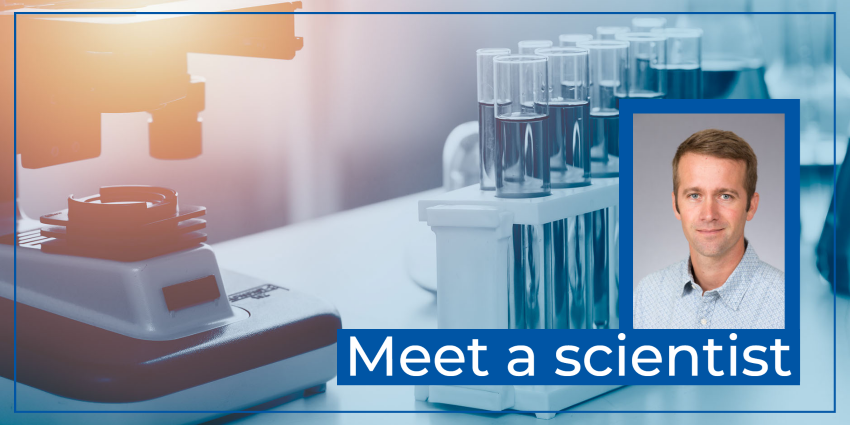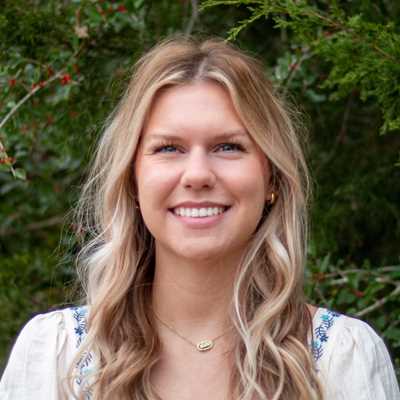All it took was one AP environmental science class to get Garrett McKay, Ph.D. hooked on the subject. The high school class gave him his first experiences with air, land and water issues, and he never looked back.
After high school, McKay stayed in his home state of California to study chemistry at California State University in Long Beach for both his bachelor's and master's degrees. There, he worked with a research group that studied water reuse processes. This combined his interests in chemistry and the environment.
That interest was further peaked while touring the Orange County Water District water reuse facility one day as an undergraduate student and observing the processes and technologies that turned treated wastewater into high-quality drinking water – a much-needed water source in Southern California.
“I'll never forget, I got to take a tour of that facility and see this massive treatment plant that processes almost 100 million gallons of water per day,” McKay said. “You see all these big pipes, all these huge reactors, and then at the end, you go to the sink, and you can have some of this water that was originally treated sewage, and you can drink it. That was really cool.”
After completing his master’s, McKay moved to the University of Colorado at Boulder and earned a Ph.D. in environmental engineering, and then started a postdoctoral research position at the Colorado School of Mines. Three years later he applied for an assistant professor position in the Zachry Department of Civil and Environmental Engineering at Texas A&M University, where he now leads an Aquatic Chemistry lab and studies environmental photochemistry.
“The position was really interesting, and the job description aligned really well with what my research expertise was, and with what I was interested in doing in the future. So it was a pretty good fit.” McKay said. “Thankfully, they chose me.”
Lasting impressions
McKay says that his undergraduate professor of organic chemistry, Dr. Paul Buonora, is who taught him what it really means to be an expert in your field. He challenged students to think through each different chemical reaction and ask the “why?” questions.
“It drove me to understand what I'm doing at the most fundamental level possible, and I think that's something I've carried with me throughout the years,” he said. “I don't know if I would have had that same mentality if I hadn't had him as a professor for a year so that was pretty powerful.”
McKay’s expertise centers on aquatic chemistry. One everyday example of aquatic chemistry is examining why lake water has a yellow or brown hue to it, even when sediment is filtered out: this background color comes from natural organic matter.
“Natural organic matter (NOM) is present in all natural and engineered systems and has important roles in the biogeochemical processes and water treatment,” McKay said. “NOM is often treated as a ‘black box’ where folks assume that one size fits all. Our work seeks to uncover how changes in the composition of NOM influence these processes.”
CAREER Award fuels new research
Mckay’s current research focus is aquatic photochemistry, aquatic chemistry and photochemical processes, but he also conducts various other research projects in his lab.
“My biggest passion is optical and photochemical properties and natural organic matter,” he said.
Earlier this year, McKay was awarded a prestigious National Science Foundation CAREER Award research grant. He and his lab will study the chemical structure of light-absorbing compounds in dissolved organic matter. The project is focused on linking the molecular level details of dissolved organic matter with its bulk properties like absorbance, and fluorescence.
“It's a significant achievement for assistant professors to receive this award, so I was very grateful, and I feel honored,” said McKay. This grant will provide his research lab with 5 years of sustained support to study this topic.
“We are hypothesizing that the types of intermolecular interactions that give NOM its brown or yellow hue are also responsible for the optical properties of related materials, such as melanins, like what make up our skin and hair color, and also atmospheric brown carbon,” McKay said.
Another NSF-funded project in McKay’s lab is studying how photochemical technologies for degrading per- and polyfluoroalkyl substances. Results from this grant, led by Ph.D. candidate Benjamin Fennell, have recently been published in the journal Environmental Science & Technology.
His lab has also received research support from the Texas Water Resources Institute’s Water Seed Grant Program, funded by the Water Exceptional Item and the Texas State Legislature.
He is excited to see his lab provide important scientific results and leadership in the field of natural organic matter reactivity in natural and engineered systems, he said.
Making science exciting
“I think one of the things I really like about being a professor is that I get to positively impact the lives of students,” McKay said.
Although his research is both interesting and exciting, he said that the biggest impact he has is on the undergraduate and graduate students he has the opportunity to mentor, and it is inspiring to see students gain knowledge and grow throughout their academic careers.
McKay encourages his students to work hard but also to have a healthy work-life balance. His advice for students is that there is no substitute for working hard.
“You can only get so far based on your inherent smarts, right? It’s important to work hard, but also to take breaks to mentally recharge,” he said. “I try to set an example of this for my students in my own life.”


